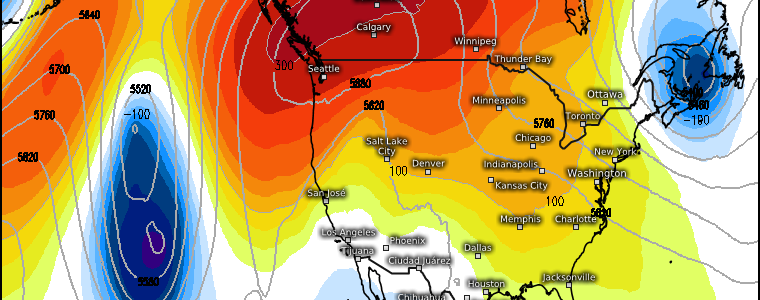
Turning Up The Heat
At the end of Friday’s blog in which I discussed how the omega block would break down and the pattern would shift, I briefly mentioned how another pattern change – specifically for the Northwest – would be lurking at the end of this week.
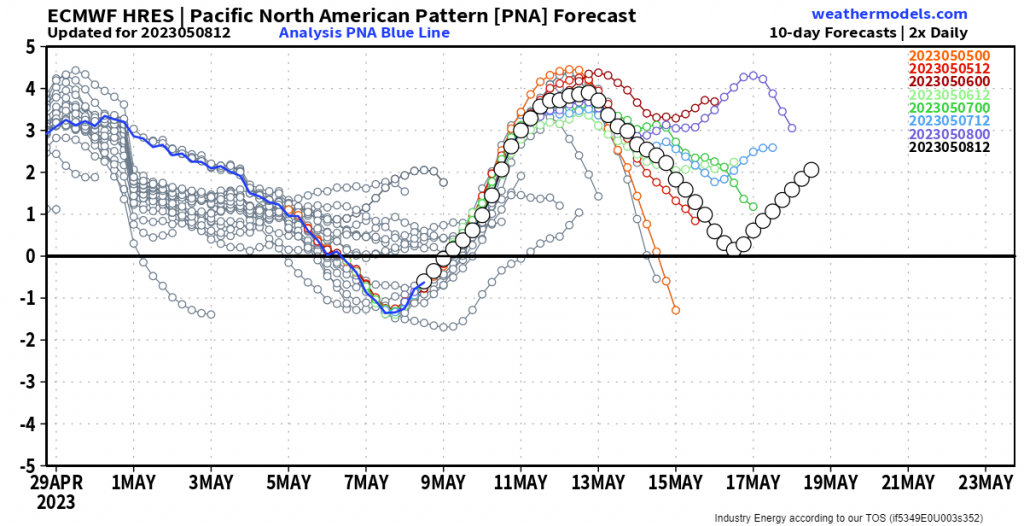
If we look at the observed state/forecast for the Pacific North American Pattern (PNA), we see that it has been neutral to weakly negative over the last half week or so. This correlates with the persistent troughing that has remained in place due to the aforementioned Omega Block.
As we look ahead to the forecasted phase, we can see the PNA quickly rocketing into a strong positive phase (indicative of ridging) by the end of the week.
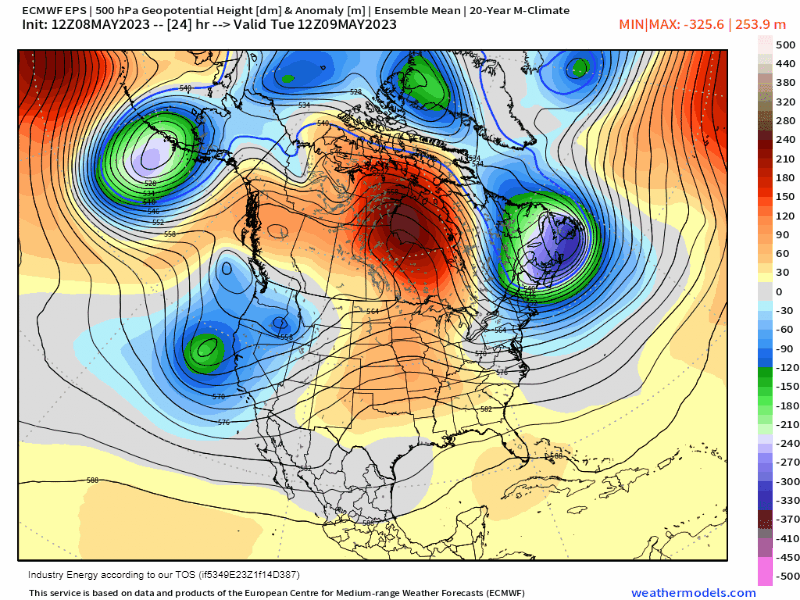
Taking a look at an animation of the 500 mb height anomaly forecast, we see exactly that.
Troughing over the West will slip under the broad area of ridging extending from the Central US into Canada. Meanwhile, one of the axes of the ridge will begin to retrograde westward. As the weekend approaches, the ridge begins to amplify over Western Canada and the Northwest US.
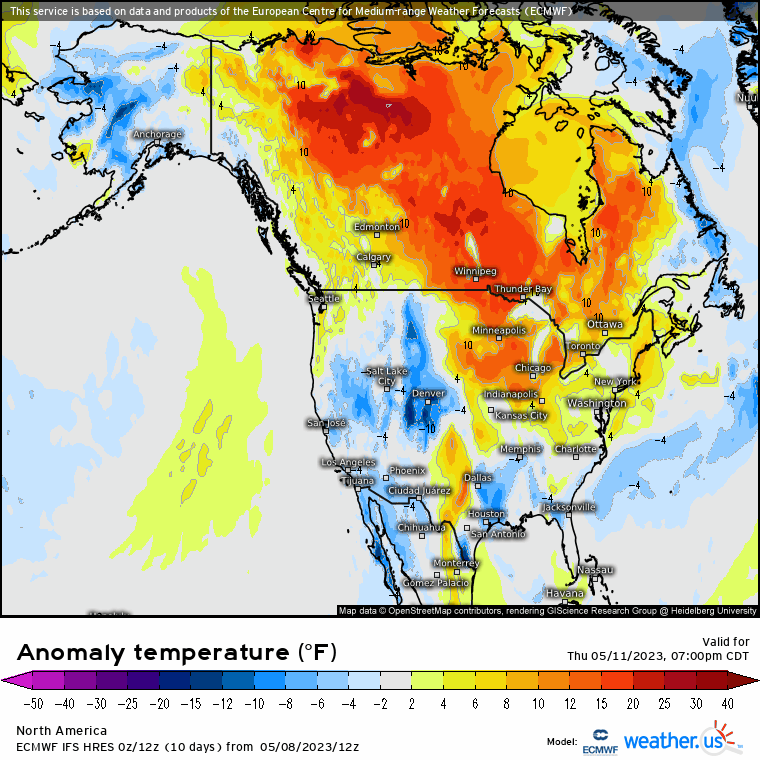
Temperatures will slowly increase over the aforementioned regions. By the onset of the weekend, temps 20 to 30 degrees above average may be found in Central/Western Canada. Similarly, temps a widespread 10 to 20 degrees above average could be found from the Northwest into Southern California.
While this isn’t a major heatwave or anything, it does provide a bit of temperature whiplash. Places that are barely edging above 50 degrees today may be approaching 90 by Friday and Saturday. Further south, the Central California Valley may approach 100 degrees by Sunday with the desert regions exceeding that.
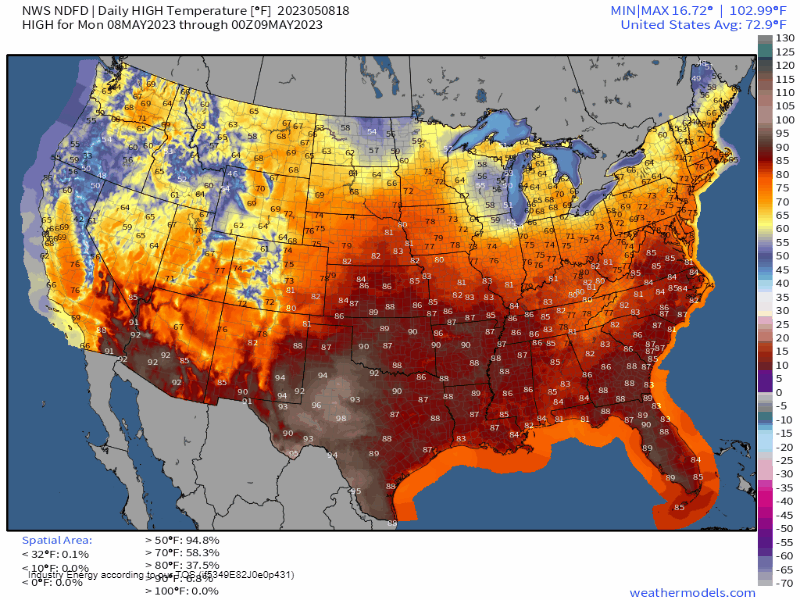
Is this a dangerous heat? Not particularly, unless you’re sensitive to heat. But it serves as a good reminder to start preparing for summer:
- Make sure your AC units are working.
- Be thinking about how you can stay cool both at home and when you’re out and about.
- Check on neighbors that might need a little help. The elderly and people with medical conditions don’t handle heat well and may need a little extra assistance.
Want to see how hot it might get in your specific area? Check out the forecast for your hometown with Weather.us’s 14 Day Trend or Weathermodels.com’s City Charts.











